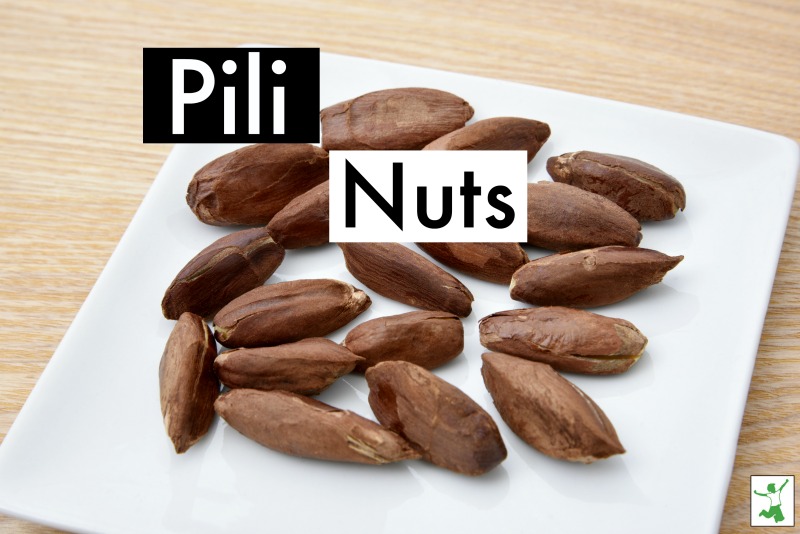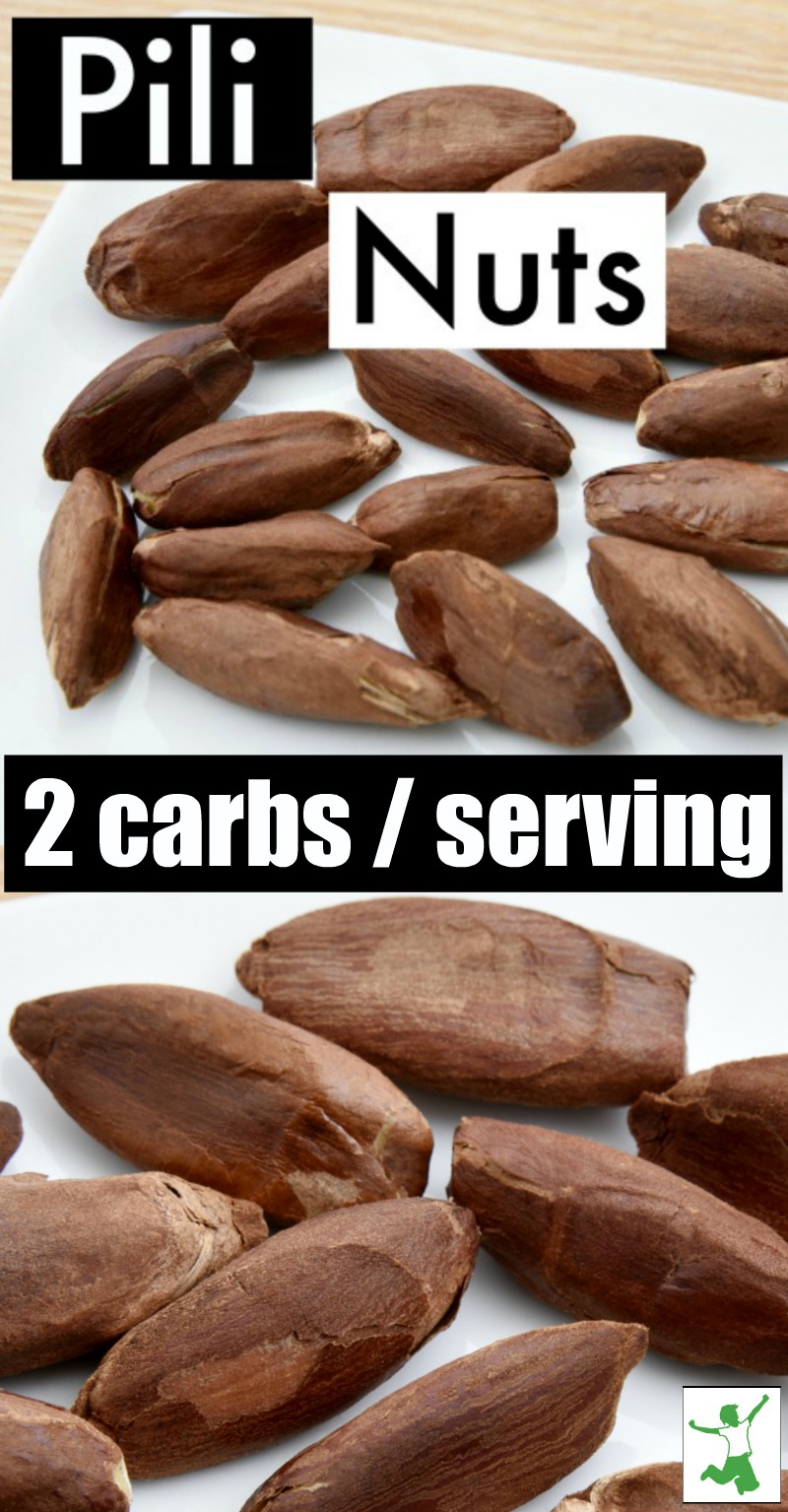
The pili nut is a superfood native to Southeast Asia and the Pacific Islands. These tear-shaped edibles definitely qualify as one of the world’s healthiest nuts, although, as yet, few Westerners have ever tried, let alone heard of them!
In traditional Filipino cuisine, pili nuts (pronounced “peeley”) are most often used in cooking and baking in roasted form.
Their flavor vaguely resembles sunflower seeds with a velvety texture that adds buttery interest that some describe as “plant-based foie gras”. (1)
A single pili nut is about the same size as two peanuts still in the shell. This makes them larger than most other nuts and comparable in size to Brazil nuts. Only a few are extremely satiating as a quick snack.
Pili Nut Macronutrients
One of the most attractive characteristics of pili nuts is their naturally ketogenic macronutrient profile.
In fact, approximately 93% of pili calories come from fat, the highest proportion of any unprocessed plant food in the world. Pilis also boast an incredibly low 2% carb content. (2)
The next closest nut to these macros is the macadamia, which has 88% fat content with 8% coming from carbs.
Highly Stable Fatty Acid Profile
Over 85% of pili nut fats are highly stable saturated and monounsaturated (as both omega-7 and omega-9). This characteristic makes them extremely resistant to rancidity.
The very low percentage of the remaining polyunsaturated fats means that a regular snacking habit of pili nuts is unlikely to contribute to the inflammatory issues that can crop up from excessive omega-6 fats in the diet.
Myth: Pilis a Good Source of Omega-3 Fats
While pili nuts are an excellent source of healthy fats, omega-3 fatty acids are not one of them.
Some sources claim that pilis have a nearly perfect ratio of omega-6 to omega-3 fats of about 1:1.
However, my research indicates that pilis are not a good source of omega-3 fats at all. The polyunsaturated fats appear to be primarily linoleic omega-6 with just a tiny proportion of linolenic omega-3. (3, 4)
However, since the total amount of polyunsaturated fat in pili nuts is so low, the fact that the omega-6 to omega-3 ratio is unhealthy is not problematic in the slightest.
High in Magnesium
In addition to a stable fatty acid profile, pili nuts are very high in the electrolyte magnesium. One serving contains about 20% of the recommended intake for an adult.
Well over half of Americans are deficient in this important mineral. Symptoms of low levels include insomnia, irregular heartbeat, hypertension, and muscle spasms and cramping.
Magnesium deficiency also speeds up aging as it encourages a change in the cells that causes them to cease renewal and replication. (5)
Cultivation of Pili Trees
Pili trees are an excellent bulwark against soil erosion. Mature trees even facilitating the maintenance or restoration of watersheds.
Their roots grow deep, which, on the positive side, makes them highly resistant to strong winds. On the negative side, it takes 5-6 years before they bear any fruit.
The pros outweigh the cons when it comes to the cultivation of pili trees, however.
With an amazing ability to thrive in high-stress environments, farmers love them because they are so low maintenance requiring little more than rainwater to grow and flourish.
How to Prepare for Maximum Nutrition
Like all nuts, pilis are best prepared in a manner that breaks down anti-nutrients to allow digestion to properly assimilate nutrients. It also helps prevents digestive distress or the rash around the mouth that some get from eating raw nuts.
Seek out soaked or sprouted versions with roasted an acceptable but less ideal method.
Sprouted pili nuts are easy to find online, but not so easy to find in stores!
A more cost-effective way to enjoy them is buying them raw in bulk and then soaking for a few hours in saltwater followed by dehydrating at low temperature.
Note, that as of this writing, any source of pili nuts in America is expensive. The Philippines is currently the only commercial exporter of pilis and each nut must be manually cracked open to preserve its delicate flavor.
Until the supply chains to the Americas and Europe are improved and/or other growing locations established, consider pili nuts an extravagance rather than a regular snacking food.









These are really great protein nutrients. I also tried beans as a source of amino acid.
May I suggest that we leave this new superfood alone so that the people in the country of origin can continue to enjoy its benefits? Otherwise there is the risk that demand and price skyrockets and the locals can no longer afford it. This happened with quinoa a while back. I am also concerned about the recent availability of krill, essential food for many marine creatures which are under enough environmental stress as it is without us stealing their food. I appreciate the wish to promote interesting new nutritional foods, but everything has consequences in the wider world, now more than ever.
I am definitely not promoting this food. Just informing people about it. I don’t use it myself. Shipping a nut from the Philippines to America for us to enjoy is insane. I eat nuts local to my environment. Besides, the price is currently insane. $10+ for about a half cup!